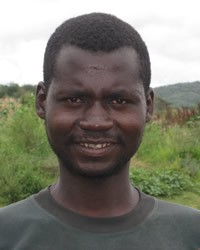Dirasha in Ethiopia

Photo Source:
Anonymous
|
Send Joshua Project a map of this people group.
|
| People Name: | Dirasha |
| Country: | Ethiopia |
| 10/40 Window: | Yes |
| Population: | 125,000 |
| World Population: | 125,000 |
| Primary Language: | Dirasha |
| Primary Religion: | Christianity |
| Christian Adherents: | 82.00 % |
| Evangelicals: | 55.31 % |
| Scripture: | Portions |
| Ministry Resources: | No |
| Jesus Film: | Yes |
| Audio Recordings: | Yes |
| People Cluster: | Omotic |
| Affinity Bloc: | Horn of Africa Peoples |
| Progress Level: |
|
Introduction / History
Dirashas live on the mountains south of Chamo lake in South Ethiopia. The town of Gardulla is at the area's highest elevation, 2,561 meters, and used to be the area's administrative center.
For outsiders, they are known as Gidole people. The language belongs to the Lowland East Cushitic group with Konso and Oromo.
What Are Their Lives Like?
Most Dirasha people are farmers, using hillside terraces for soil and water conservation. The Dirasha also cultivate the lowlands to the south and east of the mountains. The main staple food is sorghum, which is stored in underground chambers for as many as ten years. They also grow teff, maize, barley, oats, ensete, beans and peas, along with vegetables and fruit (banana, lime). Cattle, goats and sheep are kept for meat; beehives for honey. They use donkeys to transport goods.
What Are Their Beliefs?
The Orthodox Church came to the Dirashas 1920, and Evangelical missionaries came thirty years later. The Ethiopian Evangelical Church Mekane Yesus is the main Protestant church in the area. Today, traditional religion, its spirit worship and fertility rites, have been marginalized.
What Are Their Needs?
Bible translation began in 2003, and there are only portions of the Bible in their language.
Prayer Points
Pray for a complete and accurate Bible in the Dirasha language.
Pray for excellent oral gospel materials to be translated for the Dirashas.
Pray for these Christianized people to share their faith with others who have not had the chance to hear the gospel.
Pray that soon Dirasha disciples will be discipling others.